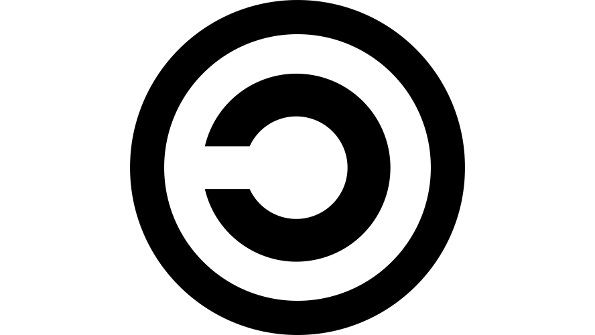Open source software licenses may not excite people as much as open source code, but they have been just as important in keeping software free. Open source licensing as we know it today didn't always exist, however. It evolved as programmers developed more sophisticated strategies regarding their intellectual property.

Open source software licenses may not excite people as much as open source code, but they have been just as important in keeping software free. Open source licensing as we know it today didn’t always exist, however. It evolved as programmers developed more sophisticated strategies regarding their intellectual property.
Below is a look at the major milestones in open source licensing history. It doesn’t cover every twist and turn. That would take a book.
But it outlines the major arc in open source licensing strategies, from the days when free software promoters disdained licenses altogether through present-day battles about software licensing and the cloud.
Before Proprietary Software
For the first several decades after World War II, as modern computing developed, there were no open source licenses because by default almost all code was openly shared and freely redistributed. In the era before closed-source software, there was no need for programmers who wanted their code to remain open to license it.
1983: Year of Change
Then came 1983, a watershed year for ways of thinking about software as intellectual proprietary.
One big change was a shift toward releasing code only in closed-source form. IBM became the first large organization to do this, starting in February 1983.
1983 was also important as the year in which AT&T turned the Unix operating system into a commercial product. This decision didn’t make Unix closed-source, but it meant that obtaining a Unix license suddenly cost tens of thousands of dollars.
In addition, the summer of 1983 saw Apple win a significant court case of Franklin Computer Corp. Apple sued because Franklin had copied binary software from Apple computers onto the machines that it sold. The case set a precedent for copyrighting binary software. That was a big deal because until that time copyrights had applied only to software source code, which the federal Commission on New Technological Uses of Copyrighted Works of 1974 had decided to treat as a form of creative work.
Finally, in November 1983 Richard Stallman announced the GNU operating system (he did not start developing it until early the next year), which he envisioned as a clone of Unix that could be freely redistributed.
The Emacs Copyright
Interestingly, Stallman and other early promoters of free software originally opposed software licenses altogether. That made sense, since they had watched as new licensing strategies encumbered source code during the early 1980s.
In fact, Stallman declared in the GNU announcement that “I cannot in good conscience sign a nondisclosure agreement or a software license agreement.”
But by 1985 Stallman was rethinking that approach. In that year he released Emacs, the first application in the GNU suite, with a copyright notice that explicitly granted users permission to make and distribute copies of the program, as well as create modified versions of the software, so long as they did not claim sole ownership over the modified version. The Emacs copyright also required that all copies or derivative versions of the program carry the same licensing terms.
This was not totally new thinking. Other programmers in the mid-1980s were experimenting with similar copyright notices designed to encourage, rather than prevent, copying of their source code. For example, the 1985 version of the Unix program trn, a tool written by Larry Wall for navigating through lists of information, included a statement stipulating that “you may copy the trn kit in whole or in part as long as you don’t try to make money off it, or pretend that you wrote it.”
But Stallman’s Emacs license stood out because, unlike the crude, ambiguous licenses of other free software programmers of the time, the Emacs license featured enough clarity to stand up in court. It also focused on keeping the source code freely redistributable, rather than questions of money or authorship.
The Birth of the GNU GPL
Other hackers in the GNU circle soon recognized the innovative power of the GNU Emacs license. By November 1986 they encouraged Stallman to broaden the license’s language by replacing the word “Emacs” with “software” so that they could use it to protect code they were writing for other programs.
Stallman did so by the end of 1986, turning the Emacs copyright notice into a “copyleft” license — a term he borrowed from programmer Don Hopkins — that could apply to all software programs. The new license became the first iteration of the GNU General Public License, or GPL.
The GPL continued to evolve from there. It was only in 1989 that the GNU project released GPL version 1.0. The license has seen two major revisions since, in 1991 and 2007. They clarified the terms of the license and helped it to stay current as technology evolved.
Linux Adopts the GPL
When Linus Torvalds released the Linux kernel in 1991 he used a crude copyright that he wrote himself. It emulated the terms of the GPL, but with “no actual lawyerese,” as Torvalds told me recently. It also included a clause that prohibited the distribution of Linux “for a fee” and barred “even ‘handling’ costs,” according to the licensing terms.
By early 1992, however, Torvalds was rethinking the Linux copyright. Spurred on by Linux users who distributed the kernel at trade shows on floppy disks and asked Torvalds if they could charge nominal fees to cover the cost of their materials, he came to believe (as he recalled recently) that “as long as people gave access to source back, I could always make [Linux] available on the internet for free, so the money angle really had been misplaced in the copyright” that he originally used.
As Torvalds considered adopting a new license for Linux, the GPL was the obvious option. There were other popular licenses in the free software community at the time, such as the permissive ones that governed BSD. But the GPL most closely resembled the homegrown license Torvalds had originally used, and the GPL governed most of the tools Torvalds had relied on to produce Linux. Beginning with the release of Linux 0.12 in January 1992, Torvalds adopted the GPL for the kernel.
New Challenges
Skipping over lots of important but comparatively less significant developments in the 1990s and early 2000s, the GPL and related software licenses remain crucial to the free software ecosystem today. So do Apache-style licenses, which were born with the Apache HTTPd server project in the mid-1990s.
Still, open source licensing remains a work in progress. Trends like cloud computing continue to present licensing challenges for people who want to make sure users can access the source of the software they use. And the recent court battle between Google and Oracle over Android code highlighted the considerable ambiguity of open source licensing when applied to things like APIs, which may or may not be treated in the same way as code.
About the Author(s)
You May Also Like


